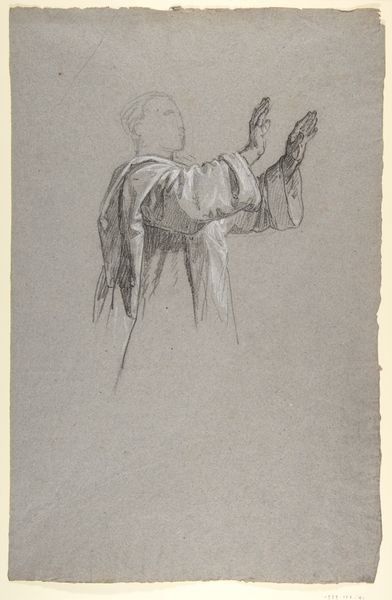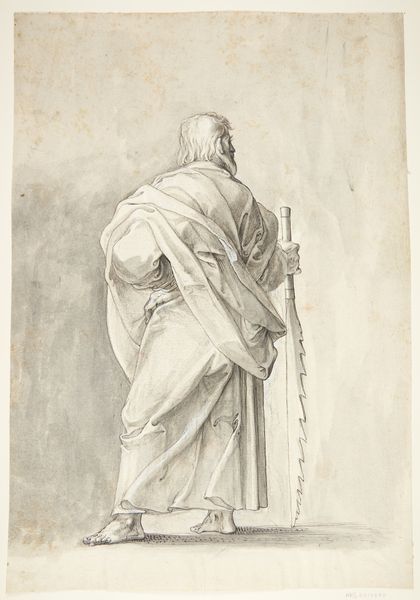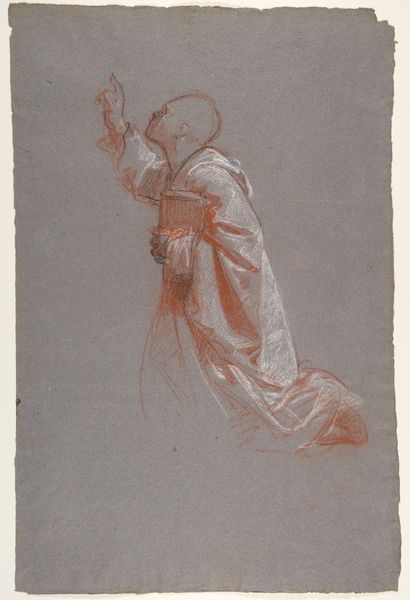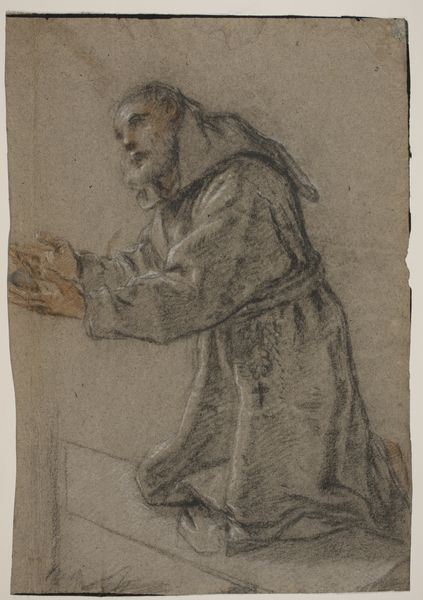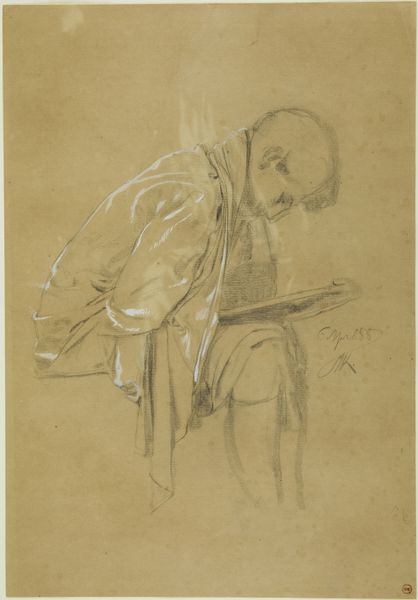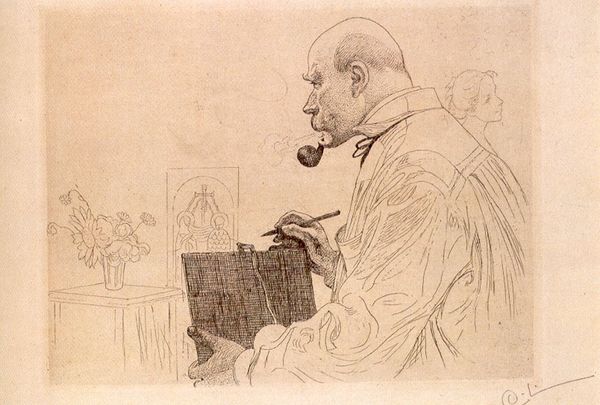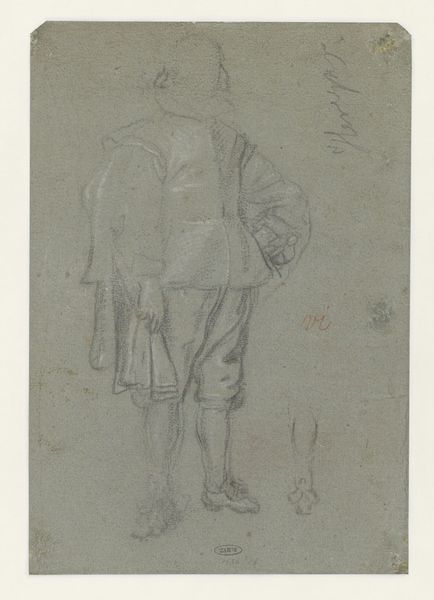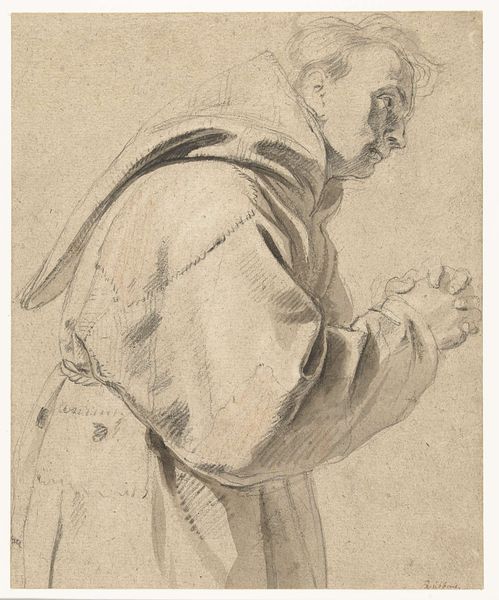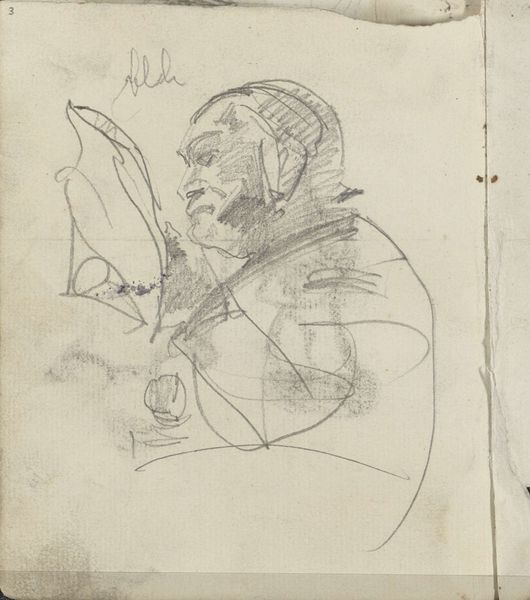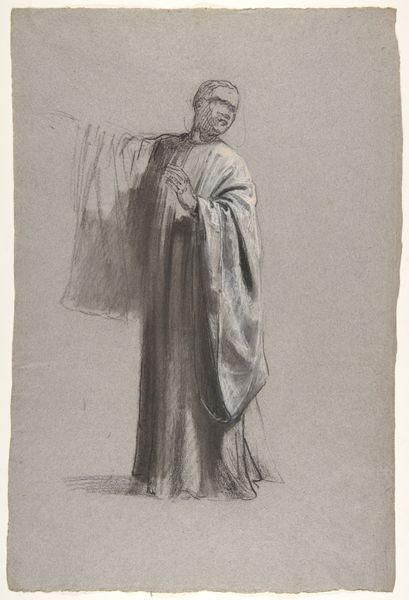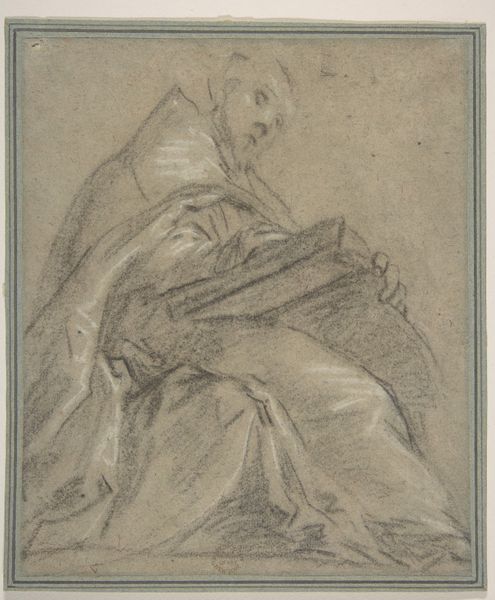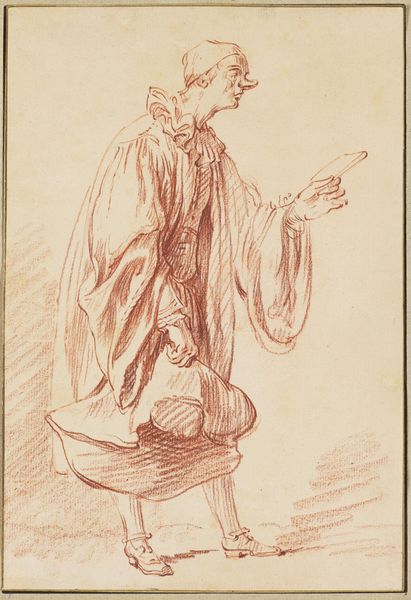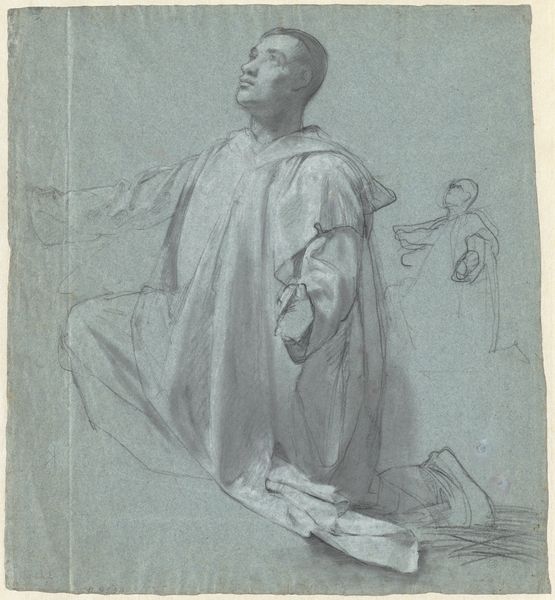
Drapery Study for a Cleric (lower register; study for wall paintings in the Chapel of Saint Remi, Sainte-Clotilde, Paris, 1858) 1825 - 1875
0:00
0:00
drawing, pencil
#
portrait
#
drawing
#
pencil
#
history-painting
#
academic-art
Dimensions: 18 7/8 x 12 3/16 in. (47.9 x 30.9 cm)
Copyright: Public Domain
Curator: This pencil drawing on paper is called "Drapery Study for a Cleric," a preparatory work by Isidore Pils. The Met dates it sometime between 1825 and 1875. What's your initial feeling when you see it? Editor: Immediately, a somber mood. The grey paper, the cleric’s posture – hands clasped in prayer, head bowed…it speaks of supplication, or perhaps resignation. The quick pencil strokes also make me think it was made with urgency or speed, or perhaps a great concentration. Curator: Pils was indeed preparing studies for a larger commission. Specifically, wall paintings in the Chapel of Saint Remi, inside the Sainte-Clotilde Basilica in Paris. Knowing this shifts my perspective. Editor: Absolutely, understanding its purpose inflects my reading. Rather than solely personal piety, it becomes about constructing a visual narrative. The figure becomes a component in a grander architectural and ideological scheme, representing power structures inherent in the church and its impact on society. I would guess that, since this is "lower register," this is a very literal, fundamental level within the greater structure. Curator: Yes, there’s a kind of art-historical hierarchy even built into the design, isn’t there? What strikes me is the attention to the folds of the drapery. See how they both define and almost conceal the figure beneath? It makes me think about clothing as a symbolic layer. Like, is this a comment on outward piety masking inner struggle, or a way of signaling that the cleric's interiority isn’t necessarily the subject? Editor: Clothes mediate so much, not only religious symbolism. Here, they denote status, gender, power – everything but the particular personhood. What I mean to say is, consider how this emphasis also shapes viewers' perceptions of figures, contributing to a specific construction of the holy figure that ultimately informs sociopolitical order and control. I wonder how it affects the viewer whether the character appears in lower or higher registers. Curator: Food for thought, truly. Pils' focus gives weight to something ostensibly superficial – the arrangement of cloth – and imbues it with narrative potential. Editor: It's precisely this tension that captivates me – this subtle intersection of formal study and loaded societal meanings. It challenges me to unpack the historical contingencies of artistic choices. Curator: Yes, it invites a look not just at an artistic skill, but the context in which it comes into being.
Comments
No comments
Be the first to comment and join the conversation on the ultimate creative platform.
